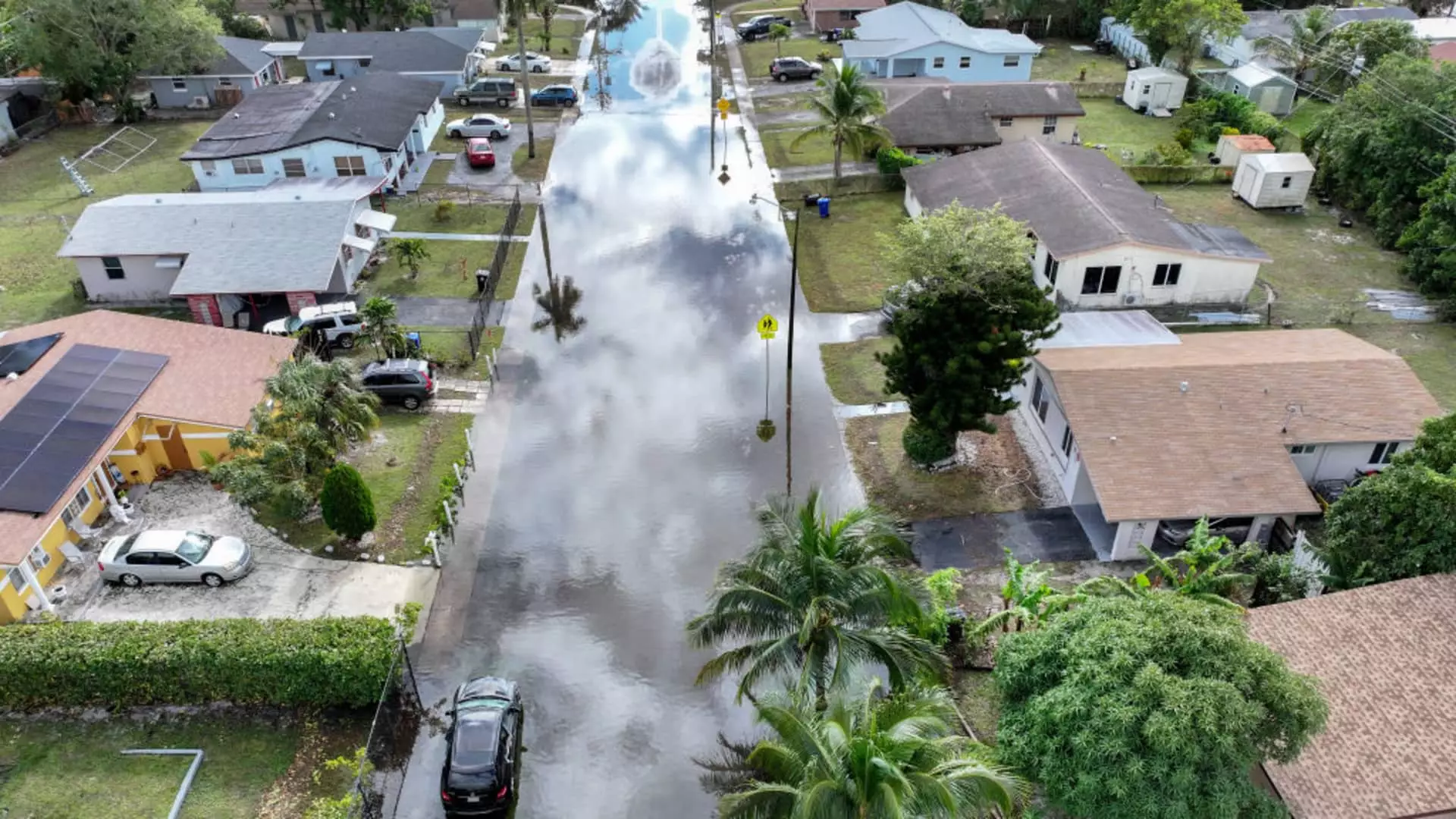Mortgage seekers often feel the burden of invasive financial scrutiny. Lenders probe into every nook and cranny of their financial lives to gauge their creditworthiness. However, an unsettling new determinant is emerging in the lending equation: climate change. As natural disasters accelerate, spurring an alarming increase in both frequency and financial repercussions, the real estate lending industry is facing an unprecedented challenge. This isn’t just about household finances anymore; it’s about the systemic vulnerabilities that climate-induced risks present to the entire financial architecture.
The Financial Reckoning: Real Estate Meets Climate Risk
The ramifications of climate change are not merely an academic concern; they pose real threats to the solvency of financial institutions. A report from First Street indicates that climate-driven disasters could lead to staggering losses—$1.21 billion this year alone, constituting a shocking 6.7% of all credit losses from foreclosures. And it doesn’t stop there; projections suggest a calamitous jump to $5.36 billion in losses over the next decade, potentially accounting for nearly 30% of foreclosure losses. As lenders begin factoring in climate risk during the underwriting process, consumers could find their credit scores fluctuating based on their geographic vulnerability to natural disasters. Higher risks translate to higher costs for borrowers—who will undoubtedly feel the brunt of these changes.
A Tipping Point: States Under Siege
Currently, the dire financial implications of climate change have a concentrated impact in geographical hotspots—namely, California, Florida, and Louisiana. Homeowners in these states are already on the front lines of escalating insurance premiums and increasing foreclosure rates due to climate threats. The First Street report underscores that homes affected by flooding are 40% more likely to face foreclosure compared to unaffected properties. This stark reality hints at an insurmountable problem: Residents in high-risk areas are struggling against rising insurance costs and lower property valuations while lenders stand firm in traditional underwriting practices that ignore future climate risks.
Additionally, the government’s handling of disaster management funding under the Trump administration has sent shockwaves through communities already reeling from climate events. The Federal Emergency Management Agency (FEMA) has seen staffing cuts and uncertainty around disaster funding, which only exacerbates the financial peril faced by homeowners in vulnerable areas. The message is clear: without congressional intervention and a serious commitment to disaster management, the financial safety net for those affected by climate change could fray entirely.
The Role of Financial Institutions: Time for Reform
The current state of mortgage markets reflects an institutional resistance to adapt to the evolving realities of climate risk. Fannie Mae, which plays a pivotal role in funding loans, has been slow to modify its underwriting criteria—a glaring oversight that cannot be ignored. While some lenders may impose flood insurance requirements on properties in designated flood zones, the broader framework does not adequately account for the inevitable repercussions of climate change. This persistent admiration of traditional lending practices risks exposing both lenders and borrowers to unforeseen financial fallout.
Experts like Jeremy Porter from First Street have elucidated that the ramifications of climate risks on mortgage markets harbor systemic implications. The hidden credit loss risks associated with climate change must be integrated into conventional financial frameworks. If left unchecked, these risks can destabilize both individual homeowners and large financial institutions.
The Future of Homeownership: A Call for Action
For many Americans dreaming of homeownership, the coastal allure remains irresistible, despite the rising costs tied to climate risks. The escalating frequency of climate-related disasters, coupled with rampant inflation and real estate development in high-risk zones, poses a dilemma for prospective buyers. As the financial stakes rise, it is incumbent upon lenders to recalibrate their risk assessments and adopt innovative underwriting models that prioritize long-term stability rather than short-term profits.
The mortgage market is no longer immune to the far-reaching impacts of climate change. Financial institutions must wake up to the reality that ignoring these risks isn’t just imprudent; it’s self-destructive. As climate change intensifies, it is crucial for all stakeholders—borrowers, lenders, and policymakers alike—to unite in addressing these challenges head-on. Only then can we hope to forge a sustainable and resilient future for the housing market, while safeguarding communities at risk from the ever-looming specter of climate catastrophes.

